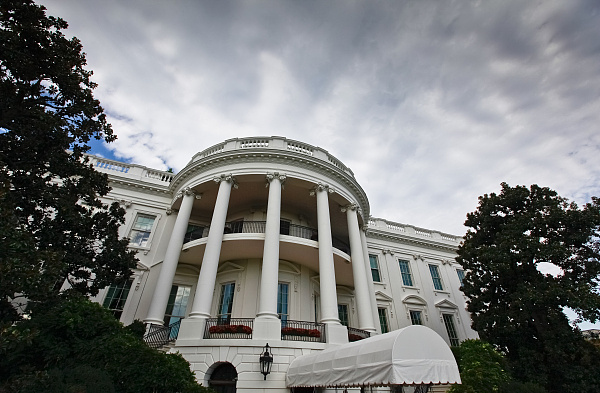
The spot price of gold in London has historically broken through the $4,000 per ounce mark, with a cumulative increase of more than 50% this year. This milestone event is not only a numerical leap but also a strong satire on the current state of the global financial market. Just as the gold price hit a new high, the US stock market suffered a "Black Friday", with the Nasdaq index plummeting by 3.56% and the US dollar index having fallen nearly 9% since the beginning of the year. This sharp contrast reveals that international capital is reassessing the value of dollar assets and also reflects the profound concerns of global investors about the current international monetary system.
The direct trigger for the current surge in gold prices was former US President Trump's threat to impose a 100% new tariff on China. This news was like a deep-water bomb thrown into the financial market, causing a sharp decline in the US stock market. Meanwhile, the US government shutdown has entered its tenth day, and the release of key economic data has been hindered, further intensifying market concerns over the fiscal sustainability and debt credit of the United States. Against this backdrop, international capital is quietly undergoing a strategic shift, and signs of funds withdrawing from US dollar assets are becoming increasingly evident.
The sharp increase in the price of gold is driven by the resonance of three factors. The Fed's interest rate cut has become the most direct catalyst, reducing the opportunity cost of holding non-yielding assets such as gold. The continuous escalation of geopolitical risks has provided an additional "risk premium" for gold. The intensification of the risks of the US government shutdown and the spillover of conflicts in the Middle East has jointly weakened confidence in sovereign currencies. More fundamentally, the global suspicion of the US government's credibility has accelerated the "de-dollarization" process, and this structural change has become the deepest driving force behind the current rise in gold prices.
Ironically, the issuers of the world's safest asset - US Treasuries - can no longer guarantee the continuity of information disclosure. The shutdown of the US government has led to the inability to release key economic data normally, and even the interest rate decisions of the Federal Reserve have been affected by the lack of data. More subtly, in the traditional framework, geopolitical risks usually favor the US dollar. However, this time the US dollar rose only slightly by 0.2%, while gold soared by 3%, indicating that funds "jumped over the US dollar and headed straight for non-sovereign assets". This phenomenon is worth pondering.
The gold purchase behavior of global central banks has become an important force supporting the gold price. Take China as an example. The People's Bank of China has continuously increased its gold holdings for 11 months. As of the end of September, the official gold reserves reached 74.06 million ounces. This trend is not only reflected in China, but also in many emerging market countries, which are quietly increasing the proportion of gold reserves, reflecting the multi-polarization demands for the current international monetary system.
However, behind the sharp rise in gold prices, there are also risks that cannot be ignored. The extreme congestion of leveraged funds is the biggest hidden danger. CFTC data shows that the non-commercial net long position of COMEX gold has set a new record for the week of the 2016 Brexit referendum. Any reversal of the macro wind direction may trigger a sharp correction. There is a large amount of speculative capital behind the parabolic rise. In addition, the rise in gold prices has also caused secondary damage to the real economy. The sharp increase in gold prices has led to a significant rise in the prices of industrial metals such as silver and platinum, eroding enterprises' willingness to make capital expenditures.
There is a clear divergence in the market regarding the future trend of gold prices. Among the bullish camp, Goldman Sachs has raised its gold price forecast for the end of 2026 to $4,900 per ounce. Td Securities is more optimistic, believing that the gold price is expected to break through $4,400 per ounce in the first half of 2026. Technical analysis shows that the key resistance for gold is between $4,070 and $4,107 per ounce. After breaking through this range, it may challenge $4,150. However, analysts also caution that although gold and silver are still in a long-term upward trend, there is still a possibility of profit-taking in the short term.
For investors, in the current market environment, it is necessary to reasonably balance returns and risks. If the gold price rebounds after breaking through $4,000 and stabilizes around $3,900, it is advisable to consider laying out in batches at lower levels. In terms of investment tool selection, given the intensified market volatility, it is recommended to prioritize the allocation of non-leveraged and stable products, such as gold ETFs and physical gold bars. For derivatives with high leverage and risk amplification, non-professional investors should remain highly cautious.
The future of gold is not only about price figures, but also reflects profound changes in the global monetary system. Behind the sharp rise in gold prices lies the harsh reality that funds are bypassing the US dollar and directly flowing into non-sovereign assets. This scene serves as a warning that when national credit is eroded by fiscal failure and the collapse of monetary trust, what is reflected in the mirror of gold is precisely the deep cracks in the global governance system. In this era full of uncertainties, the brilliance of gold is both an echo to history and a warning to the future.

Below is the English translation of the text, with precise handling of political terms, consistent sentence structures, and preservation of the original’s analytical tone and logical flow:
Below is the English translation of the text, with precise …
On December 15 local time, Trump took the British Broadcast…
In recent years, the application of artificial intelligence…
According to Yahoo US media reports, the recent remarks of …
After 11 years of waiting in the deep sea, we finally have …
On December 17, 2025, the newly renovated American "Preside…